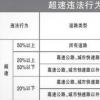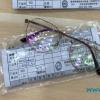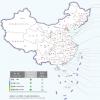参考解答
Passage One
题材:社会类
题目:The concept of childhood in the western countries
题型:简答6,判断7
文章主旨:文章主要介绍了 18世纪至19世纪,西方人们对儿童观念的变化。
一开始,人们把儿童看作是劳动的工具,使用童工。后来教育渐渐普及。
简答1-6 :
1、What concept had become a controversial topic
childhood development
2、What were middle aged children called?
miniature adults
3、What economic development caused children become labour?
industrialization
4、These children are called
useful child
5、what are the two main activities of children at the end of 19th century?
play and education
6、待补充
判新7-13:
7、FALSE According to Aries, during middle aged, children were unloved.
8、FALSE Aries’s studies were based on reliable data.
9、NOT GIVEN The working time of children was as long as adults.
10、TRUE The school was By 20 century, almost all children need to go to school.
one of the result of Factory Act.
11、FALSE The Factory Act made sure that all children went to school.
12、TRUE13、NOT GIVEN Nowadays people focus more on the particular need of children.
Passage Two
题材:地质类
题目:The Ice Age
题型:选择4,人名配对5,填空4
文章主旨:文章主要讨论了气候变化带来的影响。甶两幅名画预示未来的世界气温会下降,并讨论了全球气温骤降所带来的影响及应对措施
14-17选择
14、A预示未来会出现气温下降
15、D
16、C
17、D是什么使部落遭受气温影响:迁移受限制
18-22人名配对
18、C
19、D
20、B
21、E
22、A
选项:
A: Terrence byce
B: William Curry
C: Scientists worldwide
D: reporters in National Academy
E: Bob Dickson
23-26填空
23、heat
24、the water is called (待补充)
25、North Atlantic
26、turn southward
Passage Three
题材:环境类
题目:The effect of ocean to salinity
题型:段落标题7配对3选择4
文章主旨:文章主要讲了盐分变化对农业的影响,并介绍了各种探测海水盐分的方法,以及海水变卦和盐度之间的关系。
参考阅读:
Could Seawater Solve the Freshwater Crisis?
With 1.8 billion people predicted to live in areas of extreme water scarcity by 2025, desalination-the removal of salt from water-is increasingly being proposed as a solution.
But before desalination can make a real difference solving in the looming water crisis, officials and experts need to commit to overcoming obstacles that make the process expensive and inefficient, a newspaper argues.
Scientists predict that by 2016, the amount of fresh water produce d by desalination plants will exceed 10 billion gallons (38 million cubic meters) a year, or double the rate in 2008.
Modern desalination plants use a technology called reverse osmosis, pressing salty water through ultrathin, semipermeable plastic membranes. Unable to pass through, large molecules or ions, such as salt, are filtered out, so fresh water flows out the other side.
This method wastes much less energy than earlier desalination techniques, such as heating seawater and harvesting fresh water from t he steam. But a typical reverse osmosis plant can still spend up to 40 percent of its operating costs on generating electricity to run t he system-a big reason engineers are searching for ways to cut cos ts and make plants more efficient, starting at the membrane level. Situation Normal: All Fouled Up?
Reverse osmosis membranes have improved since their invention in the 1960s. Today's membranes do a better job of allowing water t o pass through and keeping salts out, for instance.The membranes are also more resistant to bacterial contamination, but that doesn't mean the problem of "membrane fouling" has been completely solved.
"When you operate a membrane, bacteria in the water will accumulate on the thin selective layer, making it more difficult to squeeze water through," explained Menachem Elimelech, an environmental engineer at Yale University, who co-authored the new paper.
Chlorine can be used to clear away the bacteria, but today's revers e osmosis membranes are still very sensitive to chlorine and degrade quickly when exposed to the harsh chemical.
”There should be a lot of focus to develop membranes that are chlorine resistant," Elimelech said.
Prefab Desalination Plants?
No matter how good the membranes become, however, reverse osmosis plants will need to become cheaper to build and operate if they're to meet the demands of an increasingly thirsty world, particularly in developing regions.
One way to do this is to standardize plant components and methods and to create smaller, more efficient plants, said Yoram Cohen, a chemical and biomolecular engineering professor at the University of California, Los Angeles (UCLA).
"Why are [personal computers so cheap?" asked Cohen, who was not involved in the new review. "It's because the technology is standardized. You can buy parts from anyone and exchange them or combine them into your own design."
U.S. Falling Behind?
Another way to reduce costs and improve plants is to invest more in research, development, and education, Cohen said.
In the United States, at least, such funding is inadequate, said Cohen. He worries the U.S. could soon be outpaced in desalination research by countries such as Singapore, Israel, Australia, Spain, and t he Netherlands.
Desalination, he added, should be added as a basic element of an undergraduate engineering education.
If such steps aren't taken, he warned, the U.S. will become dependent on other countries for a technology invented on its home soil. "The first membranes for water desalination were developed here a t UCLA by Sidney Loeb and Srivasa Sourirajan in the 1960s, and t he pair later built the world's first operating reverse osmosis plant in 1971, Cohen said.
Salt in the Earth
Another puzzle is what to do with the salty water, or brine, created as part of the desalination process. If a plant is close to the ocean, the brine can be safely released back into the sea if it's dissolve d beforehand. But getting rid of this concentrated solution is more problematic for inland reverse osmosis (RO) plants. "If you're away from a coastal region, it's not a simple matter," Cohen said.
"There are regulations that, in some regions, may prevent discharge of the RO concentrate back into a surface water body or into the sewer. And in certain areas, injecting that water underground may not be permitted and can be very costly."
Despite RO's promise, Yale's Elimelech is concerned that countries might see RO desalination as a silver bullet for water woes. In man y cases, the best options may be slightly less sexy but also less ex pensive:smarter land planning and plain-old water conservation, for example.(See "Desalination No 'Silver Bullet' in Mideast.")"You can not rely absolutely on desalination," he said, "if you have other alternatives.”
相似问题
搞事情的英语怎么说?搞事情该怎么用英语说?
搞事情的英语怎么说?搞事情该怎么用英语说?
2017年2月25曰雅思口语真题及解析回忆
2017年2月25曰雅思口语真题及解析回忆
2017年3月4日雅思阅读真题答案回忆
2017年3月4日雅思阅读真题答案回忆
2017年3月4日雅思口语真题答案回忆
2017年3月4日雅思口语真题答案回忆
2017年3月4日雅思听力真题答案回忆
2017年3月4日雅思听力真题答案回忆












